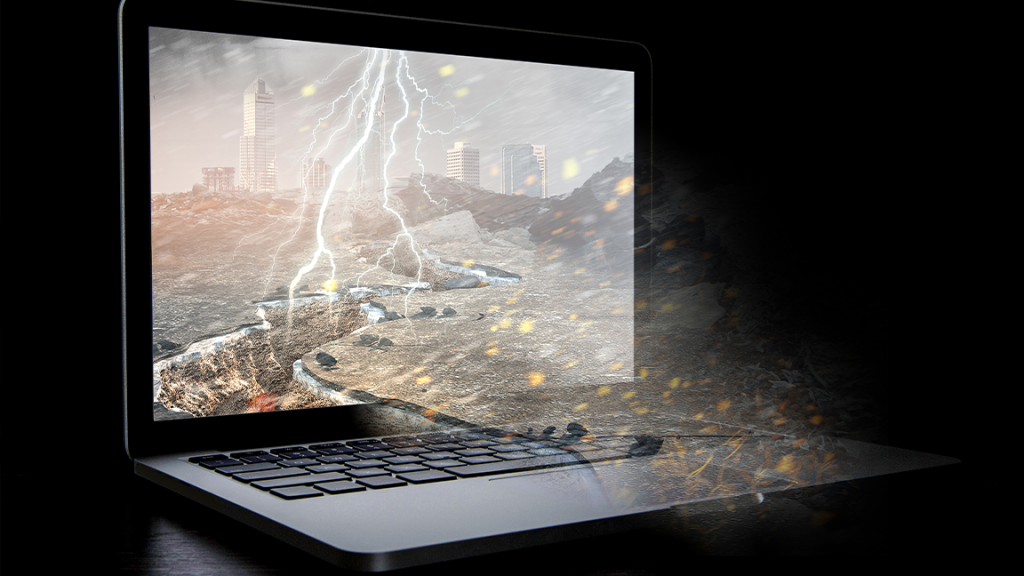Year after year, we’re experiencing the rising impact of severe weather. In 2022, there were 18 severe weather disasters in the U.S. resulting in at least $1 billion worth of damage. This trails behind 2020 and 2021, which take first and second place (with 22 and 20 events, respectively). In recent years, these events have taken a significant toll on businesses, necessitating the need for those businesses left standing to create or update their disaster preparedness plans.
This article highlights the five primary types of environmental damage to plan for and why, if you’re a business owner, it’s important to plan ahead for the survival of your business.
Why Disaster Preparedness Planning is More Important than Ever
Abnormal weather events impact the operation and performance of roughly 70% of the world’s businesses, and businesses in the U.S. are no exception.
According to FEMA, 40% of businesses never reopen following a natural disaster, and 25% of those that do resume operations will fail within a year. Further, the U.S. Small Business Administration reports that of the businesses affected by a severe weather event, more than 90% will never recover and ultimately close within two years.
Every year, more and more businesses realize that even with insurance, they may still not be protected. Between 2017 and 2021, weather-related property damages totaled over $121 billion. Even more shocking, a jaw-dropping $29.4 billion of that damage was ultimately not covered by insurance. It’s clear that developing a disaster preparedness and recovery plan will be essential as instances of severe weather events continue to rise.
Preparing for Specific Types of Environmental Damage
- Flooding: Floods are the largest source of weather-related property damage. One recent report found that as a result of flooding in 2022, US businesses lost a collective 3.1 million days of operation. Not only can floods disrupt operations, but they can also severely damage equipment. If your business is in a flood zone, then it’s important to include routine preventative measures, like maintenance of drainage systems, as well as plans for protecting equipment (with water barriers or raised shelves) in the event of an impending flood. If you’re in an area that floods regularly, then you should also consider flood insurance as part of your preparedness plan.
- Tornadoes: Severe tornadoes (EF3+) are recognized as the most powerful storms on earth, but even weaker tornadoes can cause severe damage to structures and threaten those sheltering within them. If your business is hit by a tornado, then you can expect damage from storm-flung projectiles and threats to your business’s entire structural integrity (especially with stronger storms). Preparedness planning, especially for businesses located in tornado-prone parts of the US, should include regular structural maintenance and possibly even a fortified room for employees to shelter-in-place. Your plans can also include the strategic integration of tornado and wind-proofing structural upgrades as your business receives routine maintenance (i.e. hail-resistant shingles when it’s time to replace the roofing), the use of hurricane ties and other hardware to more securely fasten the roof to the structure’s walls, and other measures outlined by FEMA.
- Earthquakes: Although throughout history, floods and droughts were the deadliest natural disasters, advancements in technology have resulted in earthquakes being the highest-fatality disaster events. Although more severe earthquakes are relatively rare, when they occur they can bring entire buildings to the ground. That’s why, depending on your business’s geographic location, it might make sense to get insurance coverage. You should also ensure that your business has been evaluated by a professional for structural integrity should a seismic event occur. You should also consider fastening heavy equipment and having an evacuation plan to exit the structure.
- Wildfires: In recent years, we’ve experienced a significant uptick in wildfires, and the consequences have been severe. California’s 2018 wildfires cost just shy of $148.5 billion and destroyed a whopping 700 businesses. To protect your business from wildfires, your disaster preparedness plan should include the installation of fire-resistant roofing and siding (either immediately or as a planned upgrade in the future). You should also include an evacuation plan and possibly insurance coverage if it’s available.
- Animals/Bugs: Although wildlife damage to structures generally isn’t thought of as a severe natural disaster, the damage that it causes can be insidiously threatening. Experts report that a colony of Formosan termites can consume an entire 1-2 story structure in less than two years, and since they damage your wood from the inside out, their presence can be difficult to catch. Termites cost more than $5 billion in damage annually throughout North America, rodents can start electrical fires by gnawing through electrical wiring, and bird droppings are acidic enough to eat through sturdy materials such as metal and stone. Protecting your building’s structural integrity should also include preventative measures to fortify your business against the elements. Even without experiencing a severe weather event, keeping up with this and other routine maintenance can pay off significantly and protect your business over the long term.
Let Sphaera Assist in Your Disaster Preparedness Planning
At Sphaera, we specialize in top-quality and tailored disaster planning and recovery. Not only do we have hands-on experience rebuilding in the immediate aftermath of a severe event, but we also have long standing experience with insurance carriers and help ensure that you receive the disaster recovery coverage that you’ve paid for.
Our expertise spans the entire spectrum of disaster recovery needs, including conducting initial risk assessments, comprehensive disaster recovery planning and cost estimates, and the engineering and structural expertise not only to repair your business’s structure, but to redesign it so that you’re better prepared for the future. We’ve worked shoulder-to-shoulder with clients experiencing every type of disaster imaginable, and we’re committed to minimizing your downtime costs, professionally negotiating with insurers on your behalf, and ensuring the survival of your business.
We support you at your worst and return you to your best. Visit our website or give us a call today!




